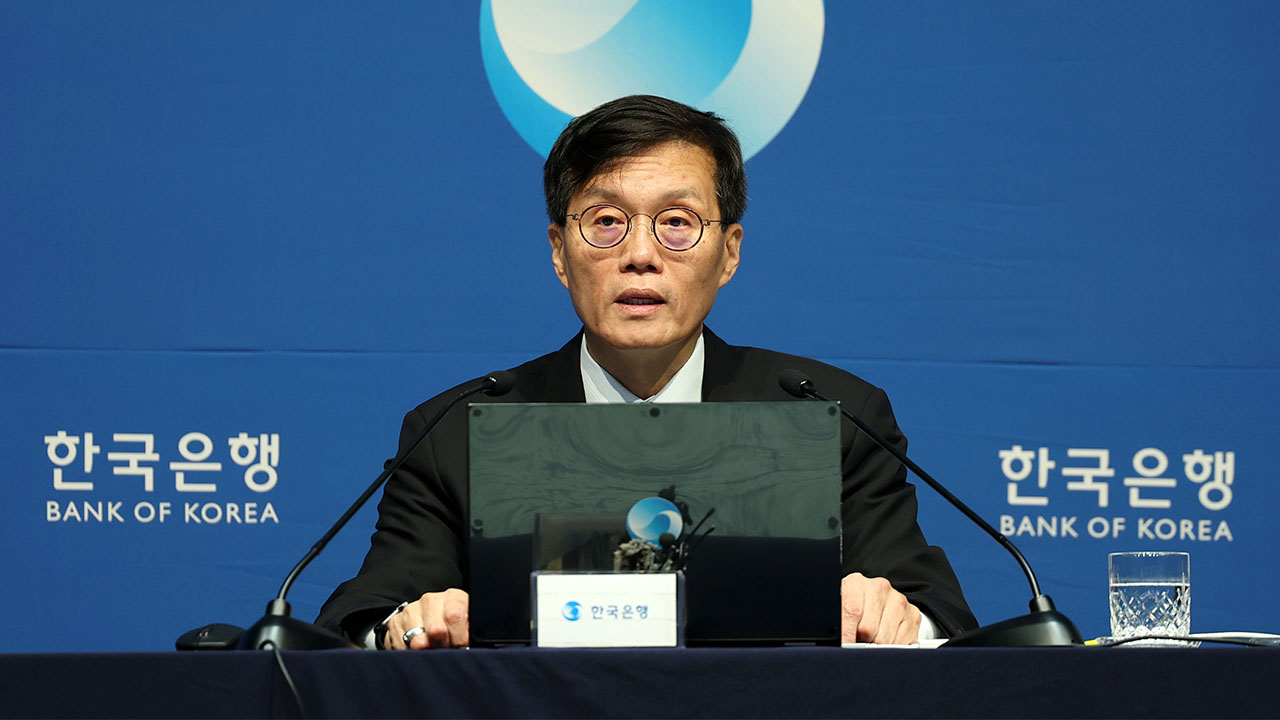
As widely expected by pundits here policymakers at the Bank of Korea have decided to hold their key interest rate steady at 3-point-5 percent for the 12th session in a row.
Our correspondent Lee Soo-jin reports.
South Korea’s central bank has yet again left its benchmark interest rate unchanged at 3-point-5 percent.
The decision was announced on Thursday following the first monetary policy committee meeting for the second half of the year.
“We have decided to maintain a tightened monetary policy as there is still a need to monitor inflation as well as the impact of rising household debt and the volatile foreign exchange market.”
This is the 12th consecutive time that the BOK has decided to freeze the rate.
The base rate was last raised in January 2023 to the current 3-point-5 percent and has been left steady since then.
The rate freeze decision this month comes despite inflation showing signs of easing.
South Korea’s consumer price index – a key gauge of inflation – rose by 2-point-4 percent in June compared to the same month the year before.
The rise in consumer prices hovered above three percent at the start of the year before dropping below the three percent mark in April and remaining in the two percent range for three consecutive months.
And the June figure was the lowest seen in 11 months – inching closer to the target inflation figure of two percent.
But ongoing concerns about household debt and the largest-ever interest rate gap are deterring the BOK from rate hikes.
In June, household loans from five major commercial banks in Korea KB Kookmin, Shinhan, Hana, Woori and NH Nonghyup surged by more than 3-point-8 billion dollars, the largest on-month rise since July 2021.
And the U.S. central bank, in its most recent June meeting, decided unanimously to keep key interest rates at the 5-point-2-5 to 5-point-5 percent range, marking the seventh consecutive meeting where the Fed has kept its interest rates at the same level.
This has left the rate gap between the two countries at its highest ever at 2 percentage points, raising concerns that the South Korean won could continue to weaken against the greenback.
While the U.S. central bank’s policymakers, in projections released by the Fed last month, were split over how many rate cuts there will be this year, most expected there to be one or two rate cuts amid the U.S. making moderate progress towards its target 2 percent inflation and the labor market cooling.
As it’s unlikely that the BOK will cut interest rates ahead of the United States, Korea’s central bank is expected to ease its monetary policies only once in October this year,. after the Fed’s possible rate cut in September.
Lee Soo-jin, Arirang News.
Source : Arirang TV, https://www.arirang.com/news/view?id=273148
Arirang TV(public institution's name)'s public work is used according to KOGL
